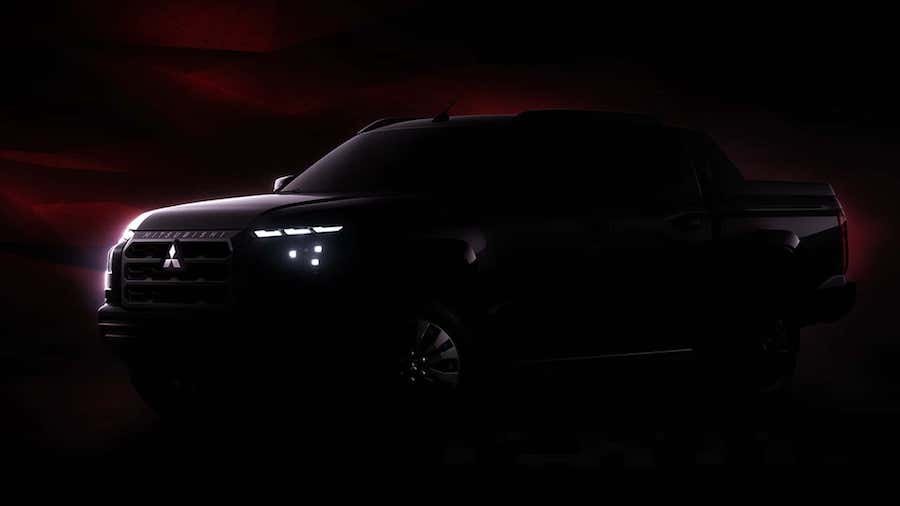2024 Mitsubishi Triton / L200 Teased Ahead Of July 26 Debut

Mitsubishi originally previewed the next-generation Triton in March by unveiling a near-production XRT Concept and now it's getting to take the wraps off the final version. Ahead of its world premiere on July 26 at an event held in Thailand, the truck is at the forefront of a surprisingly revealing teaser campaign. The shadowy images reveal the lights front and rear while the videos basically show the body and a bit of the interior, too.
Naturally, it looks a lot like the XRT since that one was more along the lines of a near-production prototype rather than a concept. Mitsubishi says the pickup has been "completely reimagined under the design concept Beast Mode." Marketing fluff aside, it does seem tougher than the outgoing fifth-generation model that has been around since 2014 before receiving a facelift four years later. The teasers show a fresh take on the split headlight arrangement with a three-point design, along with roof rails and a rear sports bar.
We took the liberty of grabbing a few screenshots from the teaser videos to show the interior with its tablet-styled infotainment and a rotary dial for selecting the two- and four-wheel-drive modes. We can also see Drive Mode and Hill Descent Assist buttons, along with toggles for the climate settings. By the looks of it, Mitsubishi has not integrated all functions into the touchscreen as drivers will have quick access to often-used features.
Technical specifications remain shrouded in mystery, but rumor has it the new Triton will be mechanically related to the next-generation Nissan Navara, which left Europe in 2022. There had been some reports about a plug-in hybrid, but the latest official word is a PHEV version hasn't been signed off yet. The new dual-cab truck is likely going to be longer and wider than its predecessor while seemingly having a rear spoiler mounted on the tailgate.
Having revived Ralliart and using the branding on the XRT Concept, Mitsubishi is likely to sell a sportier-looking Triton. The new pickup will initially go on sale in Thailand later this year before heading to ASEAN, Oceania, and other markets. Separately, a fully electric pickup is scheduled to arrive after 2025 but before 2028.
Nouvelles connexes


